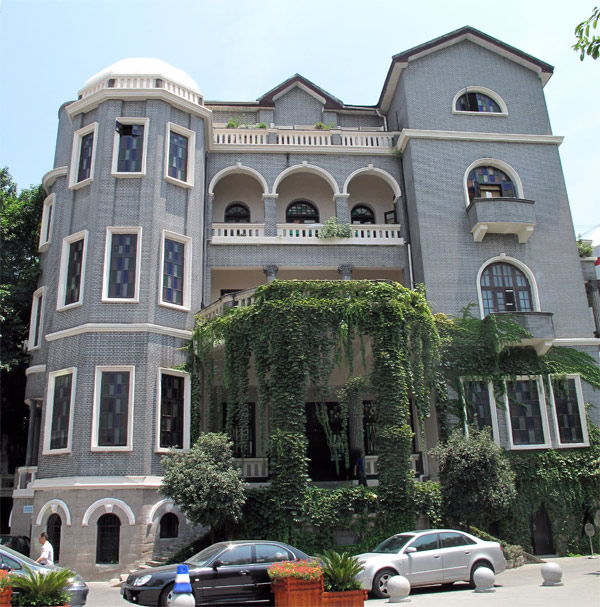Dust brushed off war heritage sites
Updated: 2013-08-15 07:16
By Luo Wangshu and Tan Yingzi (China Daily)
|
|||||||||||
Historical buildings serve as reminders of a crucial time in history, Luo Wangshu and Tan Yingzi report in Chongqing
Temperatures of 40 C were pushing the mercury to the top of the thermometer, heating up the old four-story building, which has a history as torrid as any scorching summer day.
 |
|
The administrative office of the Third People's Hospital of Chongqing was once the embassy of the Soviet Union in the city. Photos by Luo Wangshu / China Daily |
The quiet house, ivy clinging to the walls and porch, is located on a hilltop in the southwestern municipality of Chongqing, the wartime capital of China. It now serves as the administrative center of the Third People's Hospital of Chongqing, but during World War II the plain building was the Soviet embassy.
"This building may have been the birthplace of many important decisions that shaped the world during the war, and it may also have hosted world leaders," said Wang Fumei, director of the hospital's cultural affairs office, who has worked in the building for nearly 30 years.
Many countries established diplomatic centers in Chongqing during wartime, playing a critical role in the Asian theater of war. However, the history of these sites was rarely mentioned until five years ago when people started to seek out and cherish wartime truths through Chongqing's living history.
The sites, which are mainly scattered around downtown districts such as Yuzhong and Nan'an, have changed their functions in the post-1945 world.
The former United States embassy became the administrative center and dining room of the Chongqing Emergency Medical Center. The British embassy, as was, is privately owned and has been leased to a resort company. What was once the Italian embassy, its walls cracked and crisscrossed by electric cabling, is home to six families. The former office of the Indian prefectural commissioner, located in the Nanshan Botanical Gardens, now serves as a public library.
In the aftermath of that global conflict, these sites fell into disrepair, their facades dilapidated and uncared for, the grounds overgrown and tangled with weeds.
Related Stories
Japan's PM rules out visit to Yasukuni Shrine 2013-08-14 11:24
Japan reflects on militarism 2013-08-07 07:40
Evidence of Japanese germ warfare found in SW China 2013-08-06 15:35
Whether Abe plans shrine visit in spotlight 2013-08-05 07:41
Japanese PM unlikely to visit war-linked Yasukuni Shrine 2013-07-26 07:04
40 Japanese wartime shells found in NE China 2013-07-13 15:16
Today's Top News
Minors going online to buy smokes
Forbidden City bans lighters, matches
Israelis, Palestinians kick off peace talks
Manning 'sorry' for US secrets breach
Snowden case not to affect US-Russia talks
Over 200 dead after Egypt forces crush protesters
Slowing economy takes toll
UN seek private firms' help in curbing HIV/AIDS
Hot Topics
Lunar probe , China growth forecasts, Emission rules get tougher, China seen through 'colored lens', International board,
Editor's Picks

|

|

|

|

|

|





